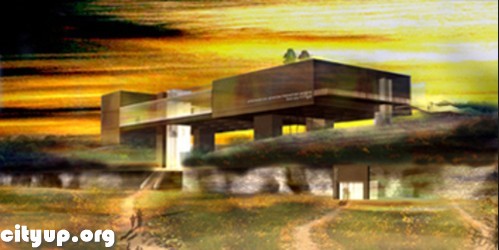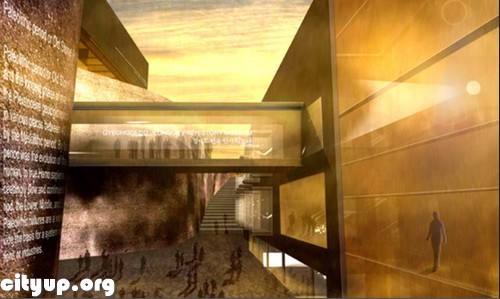


In this project, the site is our raw material in the same way as it is it for the archaeologists who investigate it. This site is known as being “crucial in the explanation of the development of the paleolithic culture” in Korea and all over the world. It is also famous for the “exquisite scenery of the Hantan river and the nearby landscape” and more generally its beauty between forest and mountain (for instance the beautiful vegetation and the magnificent points of view). The two main characteristics of this site are the presence of an abyss of basalt, until underground 20 metres, which runs from East to West and a strong difference of level between the urbanized plateau in the South and the outdoor exhibition in the North.
The basalt precipice has a considerable role to understand the Palaeolithic era whose it is question here. It is the major element of our project because of its importance (as well due to its size as for the history) and its situation.
The topography of the site is representative of the complexity to exhibit searches to the general public i.e. the opposition between the bottom and the top, who usually ignore themselves. So the main stake of our project is to create interactions between the basement and the ground while integrating the parameters of a “magnificent site” for a prehistoric museum into international echo.
So we have developed a composition of (existing / new) volumes and an empty space whichs connect spaces under and on the ground. One of the goals of this space is not to modify the site (e.g. vegetation and pedestrian streams) but to be below and over its ground. By this way, we respect this ground and we take enough distance to contemplate what it offers and especially the fault of basalt. Underground world “appears” then through the fault offering an unpublished spectacle to the guests.




 cityup.org 传真电话:010-88585380
cityup.org 传真电话:010-88585380